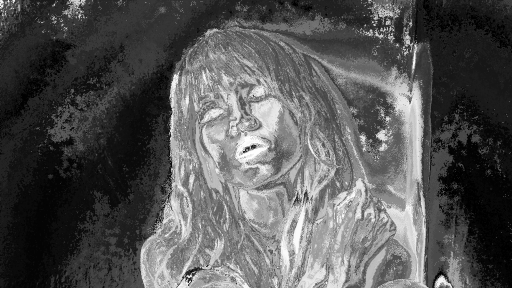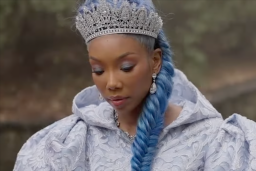Fans of indie-pop darling Carly Rae Jepsen know that when the singer-songwriter releases a studio album, a second related project — known as Jepsen’s B-sides — will likely follow. The “Call Me Maybe” singer started the trend when she released “Emotion Side B,” a follow-up to 2015’s “Emotion,” and continued it with her “Dedicated” and “Dedicated Side B” double feature in 2019 and 2020.
So when Jepsen released her sixth studio album “The Loneliest Time,” a sophisticated work inspired by funk and disco, last year, her audience clamored for a follow up. Sure enough, she officially announced “The Loveliest Time” on July 6, writing on Instagram: “I can’t really call it a B sides as if these were cast-off ideas — it’s the completed set to a body of work that taught me so much about love and loneliness and myself.”
Created by Jepsen in collaboration with producers such as John Hill, Patrik Berger, Rostam Batmanglij, Kyle Shearer and more, “The Loveliest Time” features tracks that range from ethereal “Aeroplanes” to the danceable “Kamikaze” to seductive number “So Right.” Ahead of the album’s release on July 28, Variety spoke with Jepsen about the process of conceptualizing, writing and recording “The Loneliest Time.”
This is your first album of B-sides that doesn’t have “Side B” in its name — it’s not “The Loneliest Time Side B”; it’s “The Loveliest Time.” What went into that decision?
Since doing this B-sides offering, from “Emotion” to “Dedicated” to now, I really leaned into it being one of the most exciting processes for me. The B-sides territory is this expansive world where I can play in all directions. It feels like I’ve done my first offering — now this one’s more like a place to get wild and freaky.
I knew by this time, [when] I made “The Loneliest Time,” that “The Loveliest Time” was coming. It felt more like a complete set of work versus just like a B-sides, where it was like these cast-off ideas. Also, “The Loneliest Time Side B” just sounds like a downer. It was already quite a weighted thing to call something like “The Loneliest Time,” but “The Loneliest Time Side B” is just — I just couldn’t do it.
It’s a well-known fact that you often write hundreds of songs for your projects. How many songs did you write for this album, and what was the process of whittling those down into “The Loveliest Time”?
I think it was probably close to 100 again, because that’s the way that I am. It was different because it was COVID. So I wasn’t getting to go and do sessions every day, I was doing a lot of it via Zoom, or I was doing week sessions where we would all get tested first, and then we were committed to being in these projects. There was a lot of intention behind who you are working with, it was a little bit more selective for that reason.
“The Loneliest Time” was based on the themes of loneliness, and that became very clear to me. I’m like, okay, so “[Psychedelic] Switch,” we’re gonna save for later. [But] I didn’t want it to be like the sad album, and then the happy album. There was purposely songs like “Bends” and “Go Find Yourself or Whatever” on the first offering. On the second offering, things like “Kollage” and “Put It to Rest” felt very vital — “Aeroplanes,” for example. But I think why those landed there is they were more experimental than I could ever really done ever before. So it felt safer to put them in the home of a B-sides as well.
I’m curious about the track order of the album, because I love listening to albums all the way through. How did you decide on the progression of the songs?
You are who I make track orders for — I’m like, “Will anyone ever take the time for the consideration that was put into this?”
It’s like chapters in a book, right?
Thank you! Yeah. I thought about it a lot. I wrestled with it. I then eventually flew my guitarist, my trusty best friend Tavish Crowe into L.A. We made camp in this room. I bought snacks, I sent my boyfriend away. We were like, “All right, how do we want it to start?”
It was very important to me that in the same way “Emotion Side B” opened with that little click track that goes into “The First Time” — that switch happened at the beginning [of the album]. I wanted a moment that felt big. So starting with “Anything to Be With You” — [sings the intro] “Never over, never over” — we knew how we were starting it. We knew how we wanted to end it, with “Stadium Love” being anthemic. Also we have “Weekend Love” too, but “Stadium Love” is the ending, almost in the same way that “The Loveliest Time” is supposed to be this end to a mini musical that felt exciting to me. Everything in between just made sense.
So once we had it, we went to play Bottle Rock afterwards. So we saw all my bandmates, and I actually rented a conference room at the hotel. I came in with like my folder being like, “If you have any notes, now’s the time.” We went through, and it was just really fun. We made one switch in that boardroom meeting and other than that, it was good.
“Kamikaze” is such a euphoric song that feels like it would be a favorite on the dance floor. What’s the story behind its creation?
“Kamikaze” is a fun one for me. Human nature is such that when there’s this idea that you could cause a little chaos to your life, but it’ll be fun, it’s hard not to press that button. It’s this idea that you’re traveling, and you come in for the weekend, and you see somebody whom you could cause chaos to — or you could just be good and not tell him you’re in town. Generally, we press that button. So this idea that it’s like, “I’m going to come in, I’m going to blow up both of our lives.” I like the idea that it ends in flames, but we’re going to do it anyways. We’ve all been there, I’ve been there. There’s even eye contact you make with yourself in the mirror as you’re getting ready to go to that person, and you’re like, “This is a bad idea. But somebody stop me, because I cannot be stopped!”
Any extreme emotion like that, I’m always excited to try to put music to it. So that’s what “Kamikaze” is about. That was one that started in Zoom with Jack & Coke, who are two Swedish producers that I love and have worked with in the past.
As an artist who experienced such a massive viral music moment with “Call Me Maybe” in 2012 and is now witnessing how TikTok is influencing the industry, how do you conceive of your own relationship to virality now?
It’s always been this playful, joyful surprise in my life. I haven’t intentionally sought it out. That’s the elusive magic and mystery of a thing that goes viral. The best thing that I know to do for myself to survive the changing world that is music is try to find the joyful elements of it. So when I’m looking at TikTok, if I’m finding it overwhelming, if I can find a way to enjoy it and embrace it and look at it as an avenue to have a short spurt of an advertisement for a song, or a window into something that I think is funny, then it’s great.
But if it becomes this pressure that takes over the creativity of the greater good, which is the music that you’re making and putting out that hopefully has longevity, then stop doing that. Focus on the things you do. At least for me, that’s how I look at it.
There’s a lot of conversations about the impact of producer Jack Antonoff, with whom you’ve worked closely in the past. In your view, what’s his significance to the current pop landscape?
I have nothing but lovely things to say about Jack. I think Jack shares a quality with some of my favorite producers that’s this elusive hard thing to name. Patrik Berger, who’s on this project a lot, is a good example of someone who has that same thing, and actually, they’ve worked together a lot. I think they probably are attracted to the same quality that I see in both of them, which is this joyful, playful wonder at the music that we’re making as we’re making it.
It’s like, where’s the song supposed to go? What can I do to honor the song? It’s less, for lack of a better term, the L.A. way of writing, where it’s like you come in, people are like, “What’s the concept, what’s the title?” It’s like a sales pitch, and no one’s actually grabbed the guitar yet. And that doesn’t work for me. I don’t think it works for Jack, I don’t think it works for Patrik. What does work is that you never approach the song the same way. Do you go in really open and come out surprised? That’s a good day’s work right there.
It’s not an ego competition. You’re just there to be a vessel for creativity, really. What I love about Jack is [the mindset that] there are no rules to how we get to this. It’s a great thing to be offering to the music business. So if that’s what his messaging is — and I don’t know if I’ve properly defined it for him — but I would say that I’m all for that.
Is there anything else about the album that you’d like your fans to know?
This is the first time that I’ve ever put out a song with my boyfriend [music producer Cole M.G.N.]. We did “So Right” together.
Is he in the skit at the beginning of the song?
Yes. He’s also the guy who was at the end of the “Beach House” video. He’s been such a good sport, he’s been throughout this process with me playfully engaging where he can, even though he is actually quite shy in real life. We had written the song together with Nate Cyphert, and then we had come back to workshop it. And I just felt like it was such a story song. There was so much narrative to it, it was cinematic. I was like, “We need to go there,” and he was like, “What do you mean?” I was like, “There needs to be motorcycle sounds and rain, and then I should be like, ‘Is this a good idea?’ But I need to be talking to someone, it’s a phone call.” Before you knew it, I had him on the mic. We recorded it two times and we were like, “That’s it. Let’s put it in.”
“The Loveliest Time” is out now.
Read More About:
Source: Read Full Article


